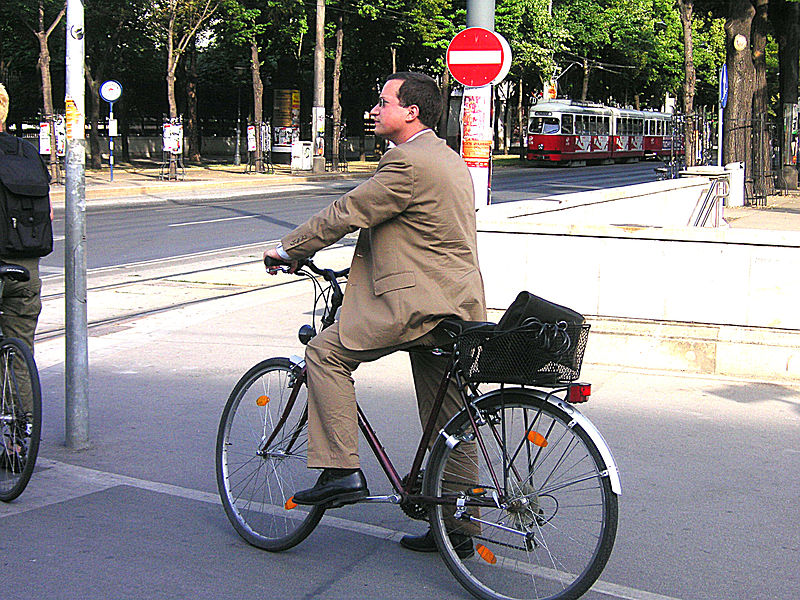Bicycle Commuting, lowers CO2 emissions, and is healthy for the commuter. Gwyn Topham, transport correspondent for The Guardian, reports on London’s ambitious plans to encourage bicycle use.
An unbroken network of cycle routes with some Dutch-style segregated lanes has been pledged as part of a £913m 10-year plan to make London safer for cyclists – including an east-west superhighway dubbed “Crossrail for the bike”.
The mayor of London, Boris Johnson, said he wanted to “de-Lycrafy” cycling and make it something everybody could do without thinking about.
Andrew Gilligan, the mayor’s recently appointed cycling tsar, said the aim was to broaden the capital’s cycling demographic – largely white men – to all groups and to give “normal people the confidence to get on their bikes”.
He promised to tackle the most dangerous aspects of cycling, recognising that the vast majority of fatalities occur at junctions, and most involve HGVs. The casualty rate has worsened in London in recent years.
A new set of superhighways, some replacing the blue routes originally installed under Johnson, is envisaged to form an improved network, with a “superhub” at Waterloo, south London, to encourage rail commuters to switch en masse to cycling rather than the tube.
Meanwhile, in an attempt to effect concentrated change on cycling habits in suburban London, the mayor’s team plan what they call “mini-Hollands”, where up to three outer London borough councils can secure funding for transformative schemes.
In six-lane stretches of the busy Westway road, one lane of vehicle traffic will be removed for the new 15-mile “cycle Crossrail” from west London to Barking in the east.
Johnson said: “The Westway, the ultimate symbol of how the urban motorway tore up our cities, will become the ultimate symbol of how we are claiming central London for the bike.”
Road traffic has fallen 22% on the Westway in recent years, said Gilligan, and even more on Victoria Embankment, where more segregated lanes are planned. Traffic has fallen significantly in London since the introduction of the congestion charge under Ken Livingstone.
Gilligan said the highways would be constructed by 2016, with the first “quietways” – unbroken cycle routes on quiet streets, imitating lines on the tube network – appearing next year.
Excerpted from Gwyn Topham, London to get network of bike routes as part of £913m plan for safer cycling (Guardian/UK)
Inhabitat’s excellent coverage by Taz Loomans can fill in some of the details: London Unveils $1.51 Billion Bicycle Master Plan With 15-Mile Bike Highway
